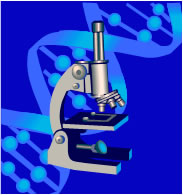
Integrity of Biological Evidence
Home > I. Types of Evidence > Integrity of Biological Evidence
Biological evidence can be significantly degraded due to the effects of environmental factors before and/or after recovery. The amount of evidentiary value is typically in inverse proportion to the duration and intensity of exposure to the following conditions:
- Presence of living organisms (bacteria, molds, insects, animals).
- Weather conditions (temperature, humidity, rain).
- The chemistry of a hostile environment (substrate at the location, soil pH).
- The amount of time interacting with any or all of the above.
It is recommended that biological evidence be air-dried as soon as possible and kept in paper packaging. The techniques used to develop DNA profiles are extremely sensitive. It is important to wear protective clothing during collection and handling to prevent contamination transmission from the collector to the evidence or between evidence items.
 Very small amounts of biological material can produce a usable DNA profile. Very small amounts of biological material can also contaminate a crime scene. Contamination of a crime scene is more likely if the number of people inside the scene is not limited. First responders, emergency medical personnel, patrol supervisors, crime scene investigators and medical examiners are all potential sources of contamination and loss of evidence.
Very small amounts of biological material can produce a usable DNA profile. Very small amounts of biological material can also contaminate a crime scene. Contamination of a crime scene is more likely if the number of people inside the scene is not limited. First responders, emergency medical personnel, patrol supervisors, crime scene investigators and medical examiners are all potential sources of contamination and loss of evidence.



